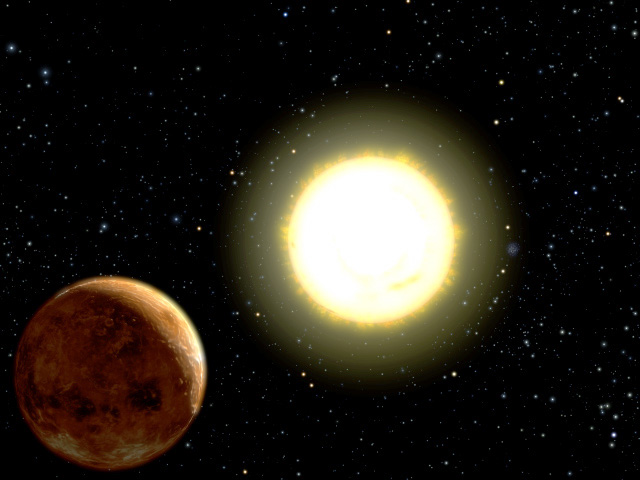
|
по текстам по ключевым словам в глоссарии по сайтам перевод по каталогу |
Explanation: Is our Solar System unique? The discovery of a Neptune-mass planet in an sub-Mercury orbit around nearby Sun-like star 55 Cancri, announced yesterday along with the discovery of other similar systems, gives a new indication that planetary systems as complex as our own Solar System likely exist elsewhere. The planet, discovered in data from the Hobby-Eberly telescope in Texas, the Lick Observatory in California, and the orbiting Hubble Space Telescope, is one of four planets now known to orbit 55 Cancri -- the others being similar in mass to Jupiter. The finding involved noting subtle changes in the speed of the star caused by its orbiting planets. The above drawing depicts what this planet might look like, assuming a mass similar to Neptune, but a composition similar to Earth. The star 55 Cancri, only 40 light-years distant, is visible with binoculars towards the constellation of Cancer.
1999 2000 2001 2002 2003 2004 2005 2006 2007 2008 2009 2010 2011 2012 2013 2014 2015 2016 2017 2018 2019 2020 2021 2022 2023 2024 2025 |
Январь Февраль Март Апрель Май Июнь Июль Август Сентябрь Октябрь Ноябрь Декабрь |
NASA Web Site Statements, Warnings, and Disclaimers
NASA Official: Jay Norris. Specific rights apply.
A service of: LHEA at NASA / GSFC
& Michigan Tech. U.
|
Публикации с ключевыми словами:
Neptune - planetary system - Нептун - Рак - планетная система
Публикации со словами: Neptune - planetary system - Нептун - Рак - планетная система | |
См. также:
Все публикации на ту же тему >> | |
